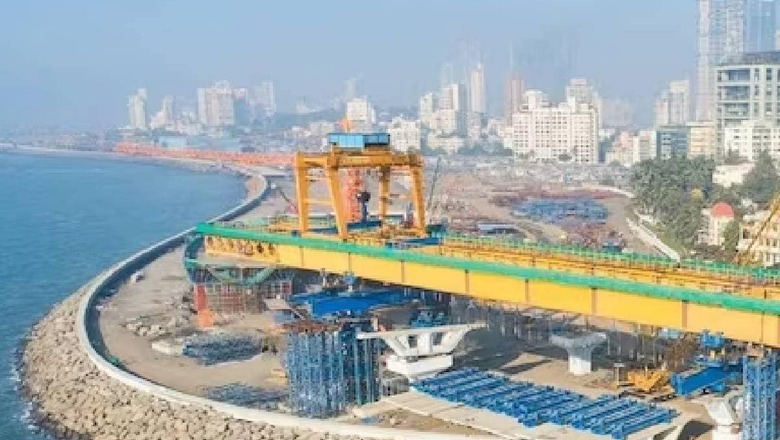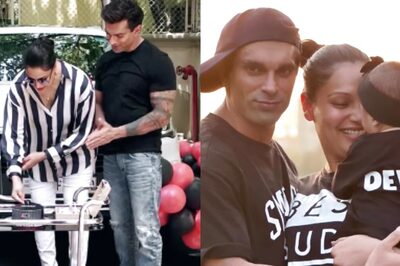
views
After the inauguration of the Atal Setu sea link, now all eyes are on the first phase of the Mumbai coastal road. According to sources, the Brihanmumbai Municipal Corporation (BMC) is planning to open the first phase in February but no date has been confirmed yet. They also indicated that the entire coastal road project would be ready by May for the people of Mumbai.
This project, started in 2018 and stretching from the Princess Street Flyover to the Worli end of the Bandra-Worli Sea Link, is on the cusp of reaching its final stage, according to officials, as it is 84% ready. It is also regarded as one of the most expensive projects of the BMC. As per information shared by the municipal body, tunnel boring operations have been completed 100 per cent, with reclamation work following closely at 97 per cent. The construction of the sea wall is at an advanced stage at 84 per cent, while interchange development and bridge construction are at 85.5 per cent and 83 per cent, respectively.
The main aim of the coastal road project is to ease the traffic of south Mumbai during the morning and evening peak hours. Thus, it has been designed to make connectivity better between the southern and northern parts of the city. Authorities expect that with this mega project, Mumbaikars will certainly save at least 70 per cent of their commute time and it will also help lower fuel consumption by 30-34 per cent. Currently, due to traffic congestion during morning and evening peak hours, it takes 30-40 minutes to travel between Worli and Marine Drive. But authorities are confident that with the help of the coastal road project, the travel time will significantly be reduced to 10-12 minutes.
With an eye on safety, the speed limit on the coastal road has been kept at 80 kmph. The BMC is confident that a reduction in traffic will help reduce noise and air pollution, which will further contribute to improving the air quality in the city. The civic body also expects a significant reduction in carbon footprint because of the project.
The 10.58-km coastal road that connects south Mumbai to Worli has 8 lanes on the surface, and in the tunnel, it has 6. There will be a dedicated lane for buses. The two tunnels of this coastal road, each measuring 2.072 kilometres in length with an internal diameter of 11 metres, are being constructed between Priyadarshini Park and Girgaon Chowpatty. The project also includes a 4.35 km road on reclamation and 2.19 km of bridges. The excavation of the southbound tunnel commenced in January 2021 and concluded in January 2022. Subsequently, the boring of the northbound tunnel began in April 2022 and ended in May 2023. The tunnels are fortified with a 375-mm-thick concrete cover, featuring fire protection boards.
For the first time in India, the Saccardo ventilation system has been implemented in the tunnels of the coastal road project. Further, the BMC has also used an advanced traffic control system in the tunnels. Keeping the safety of commuters in mind, cross passages are strategically placed at 300-metre intervals, ensuring swift exit options in an emergency. Underground parking facilities have been created at four locations with a total capacity of 1,800 vehicles.
“Our current focus is on expeditiously opening the southbound carriageway. Given that construction activities on the seaward side of the stretch will persist until May 2024, we are contemplating the installation of a green net on the southbound side. This measure aims to minimise distractions for motorists traversing the stretch due to the ongoing construction work on the opposite side,” said Mantayya Swamy, chief engineer of the Mumbai coastal road.
The coastal road has three interchanges at important locations—Amarsons Garden along Nepean Sea Road, Lotus Jetty-Haji Ali, and at Worli’s Bindumadhav Thackeray Chowk. The Haji Ali interchange is the key location as it has a multi-level structure, allowing accessibility to the coastal road from many directions. These interchanges play a pivotal role in enhancing connectivity and navigation along the coastal road network.
While constructing the coastal road, a team of engineers have thoughtfully tried to utilise natural materials, specifically rock boulders and armour rock, to build the proposed seawall, which is expected to foster the growth of marine fauna. This approach not only offers coastal erosion protection but also serves as a formidable barrier against storms and floods. This project also incorporates the construction of 20 underpasses designed for pedestrians, facilitating easy access to the promenade.

















Comments
0 comment